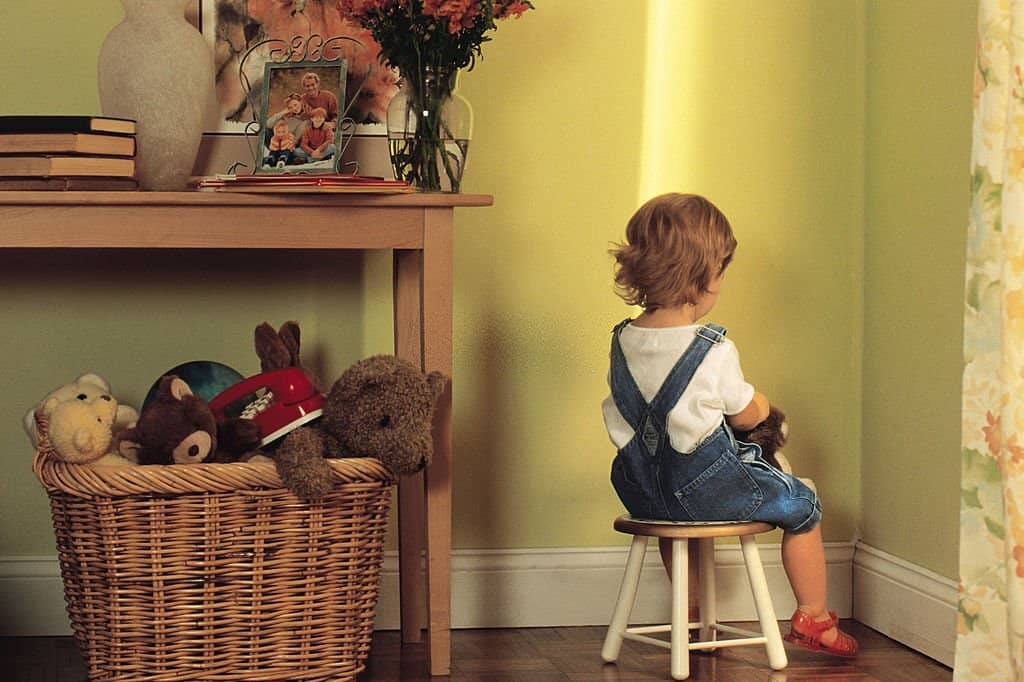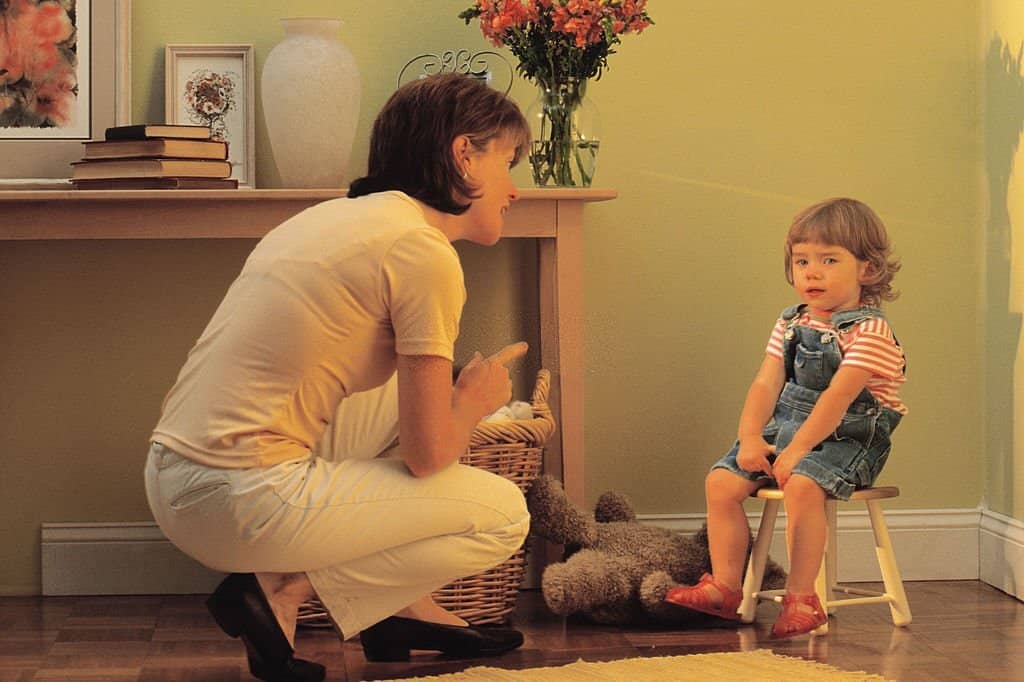I. Introduction
Discipline is an essential aspect of parenting, and finding effective techniques to address challenging behaviors is a common concern for many parents.
Time-out discipline is a widely recognized and utilized strategy to manage and redirect inappropriate behavior in children.
By implementing time-out techniques effectively, parents can teach their children valuable lessons about self-regulation, accountability, and responsible behavior.
In this article, we will explore the importance of time-out discipline and delve into practical techniques for implementing it effectively.
Time-out discipline involves temporarily removing a child from a situation or activity when they exhibit inappropriate or disruptive behavior.
The purpose of time-out is not punishment but rather to provide a structured opportunity for the child to calm down, reflect on their behavior, and learn to make better choices.
It is a valuable tool that promotes self-control and helps children develop important skills for emotional regulation and problem-solving.
One of the key benefits of time-out discipline is its effectiveness in interrupting the cycle of negative behavior.
By removing the child from the immediate environment or activity, time-out disrupts the reinforcement of negative behaviors.
It creates a pause and allows both the child and the parent to regain composure and reflect on the situation.
This break in the behavior pattern helps children learn to recognize the consequences of their actions and provides an opportunity for them to reset their behavior.
Effective time-out techniques involve clear guidelines and consistent implementation.
Establishing clear rules and expectations for time-out, including specific behaviors that warrant a time-out, helps children understand the consequences of their actions.
Communicating these guidelines in a calm and firm manner ensures that the child knows what is expected of them and why they are being placed in time-out.
Identifying an appropriate time-out location is another crucial aspect of effective time-out discipline.
The designated space should be quiet, free from distractions, and safe for the child.
It should be a place where the child can be alone and reflect on their behavior without the stimulation of toys, electronics, or other distractions.
This allows them to focus on calming down and self-reflecting during the time-out period.
Determining the duration of time-out is an important consideration.
The length of time should be age-appropriate and dependent on the child’s ability to understand and reflect on their behavior.
For younger children, shorter time-outs of one to two minutes may be suitable, while older children may benefit from slightly longer time-outs of five to ten minutes.
It is crucial to remain consistent in enforcing the designated time-out duration to maintain the effectiveness of the technique.
During the time-out, it is essential for parents to remain calm and neutral.
Avoid engaging in arguments or discussions with the child during this period.
The purpose of time-out is for the child to have a moment to reflect on their behavior and regain composure.
By staying calm and neutral, parents model self-control and demonstrate that inappropriate behavior does not elicit attention or reward.
Monitoring the child during time-out is necessary to ensure their safety and compliance.
Parents should periodically check on the child without engaging in conversation or providing attention.
This monitoring reinforces the notion that time-out is a serious consequence of inappropriate behavior and that the child is expected to remain in the designated time-out area until the time is up.
In conclusion, effective time-out techniques provide parents with a valuable strategy for addressing challenging behaviors in their children.
Time-out discipline, when implemented correctly, offers an opportunity for children to self-regulate, reflect on their actions, and learn from their mistakes.
By setting clear guidelines, choosing an appropriate time-out location, determining the duration of time-out, remaining calm and neutral, and monitoring the child during a time-out, parents can utilize this technique effectively.
In the following sections, we will explore additional tips and considerations for successful time-out discipline, as well as alternative disciplinary approaches that can complement and enhance its effectiveness.
Let us embark on this journey of guiding our children toward responsible behavior and positive growth.
II. Understanding the Purpose and Benefits of Time-Out Discipline

Time-out discipline is a widely recognized and effective technique used by parents and caregivers to manage challenging behaviors in children.
This section delves into the purpose and benefits of time-out discipline, exploring how it can be implemented to promote positive behavior and emotional regulation in children.
A. Definition and Purpose of Time-Out Discipline:
Time-out discipline refers to a disciplinary strategy where a child is temporarily removed from a stimulating or reinforcing environment as a consequence of their inappropriate behavior.
The purpose of time-out discipline is not punishment but rather a means to provide a brief break and teach children self-regulation skills.
It allows children to calm down, reflect on their actions, and learn to make better choices in the future.
B. Teaching Self-Regulation and Emotional Control:
One of the primary benefits of time-out discipline is the opportunity it provides for children to learn self-regulation and emotional control.
When a child is placed in time-out, they are given a chance to pause and regain composure, helping them recognize and manage their emotions.
This teaches them that they have the power to control their reactions and make better choices when faced with challenging situations.
C. Setting Boundaries and Reinforcing Expectations:
Time-out discipline serves as a valuable tool for setting boundaries and reinforcing expectations.
By implementing a time-out when a child engages in inappropriate behavior, parents communicate clear boundaries and demonstrate that certain actions have consequences.
Consistently applying time-out discipline helps children understand the expectations for their behavior and encourages them to develop self-discipline.
D. Providing a Safe and Calm Space:
Time-out discipline offers children a safe and calm space where they can gather their thoughts and regain control over their emotions.
It removes them from the immediate situation and allows them to calm down without external distractions.
This safe space encourages self-reflection and enables children to refocus their attention on appropriate behavior.
E. Promoting Responsibility and Accountability:
Time-out discipline encourages children to take responsibility for their actions and be accountable for the consequences.
When children are placed in time-out, they learn that their behavior has an impact on themselves and others.
This understanding fosters a sense of accountability, as children begin to recognize that their choices have direct consequences on their own well-being and relationships.
F. Enhancing Communication and Problem-Solving Skills:
Another benefit of time-out discipline is that it creates an opportunity for open communication and problem-solving.
After the time-out period, parents can engage in a calm discussion with the child, helping them understand why their behavior was inappropriate and how they can make better choices in the future.
This dialogue promotes effective communication skills and empowers children to think critically about their actions.
G. Encouraging Self-Reflection and Learning:
Time-out discipline allows children to reflect on their behavior and learn from their mistakes.
During the time-out, children have the chance to think about what led to their time-out, how their actions affected others, and what alternative behaviors they could have chosen.
This self-reflection supports the development of self-awareness and encourages children to make positive changes in their behavior.
In summary, time-out discipline is a valuable technique that serves multiple purposes and offers several benefits for children.
It teaches self-regulation and emotional control, sets boundaries, provides a safe space, promotes responsibility and accountability, enhances communication and problem-solving skills, and encourages self-reflection and learning.
When implemented consistently and with empathy, time-out discipline can be an effective tool for shaping positive behavior and promoting healthy emotional development in children.
III. Establishing Clear Time-Out Guidelines
Time-out discipline is an effective strategy that parents can utilize to teach children about appropriate behavior and self-regulation.
It provides a structured opportunity for children to reflect on their actions and understand the consequences of their behavior.
In order to maximize the effectiveness of time-out discipline, it is essential to establish clear guidelines that encompass various aspects of the process.
This section will delve into the importance of defining the purpose and rules of time-out, identifying appropriate time-out locations, determining time-out duration, communicating expectations to the child, and maintaining consistency in time-out implementation.
A. Defining the Purpose and Rules of Time-Out
When implementing time-out discipline, it is crucial to define its purpose and the specific rules associated with it.
The purpose of time-out is to give the child a chance to calm down, reflect on their behavior, and regain self-control.
By clearly explaining this purpose to the child, they can understand that time-out is not a punishment but rather an opportunity for growth and learning.
Additionally, establishing clear rules is essential to ensure consistency and fairness.
For instance, the child should know what types of behavior will result in a time-out and what actions they need to take during the time-out period.
By setting these rules, the child will have a clear understanding of expectations, enabling them to learn from their mistakes.
B. Identifying Appropriate Time-Out Locations
Selecting appropriate time-out locations is another crucial aspect of time-out discipline.
The location should be safe, free from distractions, and easily accessible.
A designated area such as a quiet corner or a specific chair can serve as the time-out spot.
It is important to choose a location that is separate from the child’s usual play area, as this reinforces the notion that time-out is a distinct and intentional break from their regular activities.
C. Determining Time-Out Duration
Determining the appropriate duration for time-out is essential to strike a balance between providing enough time for reflection and ensuring the child’s well-being.
Generally, experts recommend assigning one minute of time-out per year of the child’s age.
For example, a four-year-old would have a four-minute time-out.
However, it is important to consider the individual child’s temperament and adjust the duration accordingly.
Some children may need shorter time-outs, while others may benefit from longer periods.
D. Communicating Expectations to the Child
Effective communication is key to the success of time-out discipline.
Clearly and calmly explain to the child the expectations associated with a time-out.
Let them know that time-out is not a punishment but a chance to think about their behavior and make better choices.
Emphasize that once the time-out is over, they have an opportunity to start fresh and engage in positive behavior.
By reinforcing these expectations, the child will develop a better understanding of the purpose behind time-out discipline.
E. Consistency in Time-Out Implementation
Consistency is crucial when implementing time-out discipline.
This involves consistently enforcing the rules and consequences associated with a time-out.
By maintaining consistency, parents send a clear message to their children that certain behaviors are not acceptable and will result in a time-out.
When parents are inconsistent in applying time-out discipline, it can confuse the child and undermine the effectiveness of the strategy.
Consistency fosters a sense of stability and predictability, helping children understand the boundaries and consequences of their actions.
IV. Implementing Time-Out Effectively
Time-out discipline is a valuable strategy that parents can utilize to teach children about appropriate behavior and self-regulation.
To ensure the effectiveness of time-out, it is essential to implement it in a thoughtful and consistent manner.
This section will explore key elements of implementing time-out effectively, including recognizing behavioral triggers for time-out, remaining calm and neutral during time-out, explaining the reason for time-out, escorting the child to the time-out area, and monitoring the child during a time-out.
A. Recognizing Behavioral Triggers for Time-Out
Understanding the behavioral triggers that warrant a time-out is crucial for effective implementation.
Every child is unique, and their behaviors may vary.
However, common triggers for time-out include aggression, defiance, disrespect, and other forms of inappropriate behavior.
By recognizing these triggers, parents can proactively address and respond to the behaviors that require a time-out.
Being aware of the specific behaviors that necessitate a time-out empowers parents to intervene effectively and guide their children toward more positive choices.
B. Remaining Calm and Neutral During Time-Out
When implementing time-out discipline, it is essential for parents to remain calm and neutral.
This means refraining from displaying anger, frustration, or emotional intensity during the time-out process.
Parents should approach time-out as a teachable moment rather than an opportunity for confrontation.
By maintaining a calm and neutral demeanor, parents model appropriate behavior and set the tone for the child to reflect on their actions without feeling attacked or overwhelmed.
C. Explaining the Reason for Time-Out
Clear communication is vital when implementing time-out discipline.
It is crucial to explain to the child the reason for the time-out in a concise and age-appropriate manner.
This explanation helps the child understand the connection between their behavior and the consequence of time-out.
By providing a clear and rational explanation, parents facilitate the child’s comprehension of cause and effect, encouraging them to take responsibility for their actions.
D. Escorting the Child to the Time-Out Area
When implementing time-out discipline, it is important to escort the child to the designated time-out area.
This action reinforces the idea that time-out is a deliberate break from the child’s current environment and activities.
By escorting the child, parents demonstrate the seriousness of the situation and ensure that the child follows through with the time-out.
It also helps maintain consistency and clarity regarding the expectations associated with time-out discipline.
E. Monitoring the Child during Time-Out
While the child is in the time-out area, it is crucial for parents to monitor their behavior without direct engagement.
The purpose of time-out is for the child to reflect on their actions and regain self-control.
Parents should observe from a distance, ensuring that the child remains in the designated area and follows the rules of the time-out.
Monitoring the child allows parents to address any attempts to escape or engage in inappropriate behavior during the time-out period.
Additionally, monitoring provides an opportunity for parents to assess the child’s emotional state during time-out.
If the child is becoming excessively upset or overwhelmed, parents can consider adjusting the duration or providing additional support to help them calm down.
It is essential to balance the goal of reflection and self-regulation with the child’s emotional well-being.
V. Reinforcing Positive Behavior after Time-Out

Time-out discipline is a valuable strategy that parents can employ to teach children about appropriate behavior and self-regulation.
After a time-out, it is essential to reinforce positive behavior and provide guidance for future actions.
This section will delve into key ways to reinforce positive behavior after the time-out, including offering encouragement and praise, providing opportunities for redemption, discussing the behavior and offering alternative solutions, teaching problem-solving and emotional regulation skills, and reinforcing consistent boundaries and expectations.
A. Offering Encouragement and Praise
Following a time-out, it is important for parents to offer encouragement and praise to the child.
Recognizing and acknowledging the child’s efforts to improve their behavior is crucial for building their self-esteem and motivation to make better choices.
By praising the child for their self-reflection, self-control, and willingness to correct their behavior, parents reinforce the positive aspects of the time-out discipline.
This positive reinforcement helps children associate positive behavior with positive outcomes, further encouraging them to continue exhibiting appropriate conduct.
B. Providing Opportunities for Redemption
Time-out provides children with an opportunity to reflect on their actions and make amends.
After the time-out period, parents can provide opportunities for redemption and learning.
This can be done by allowing the child to express their understanding of the inappropriate behavior, apologize if necessary, and make a plan to prevent similar incidents in the future.
By providing opportunities for redemption, parents foster a sense of accountability, empathy, and personal growth in the child.
C. Discussing the Behavior and Offering Alternative Solutions
Engaging in open and constructive discussions about the behavior that led to the time-out is vital for the child’s development.
Parents should initiate a conversation where they calmly and non-judgmentally discuss the inappropriate behavior and its consequences.
This discussion should focus on helping the child understand why the behavior was inappropriate and exploring alternative solutions.
By offering alternative strategies or approaches to handle similar situations in the future, parents empower children to make better choices and develop problem-solving skills.
D. Teaching Problem-Solving and Emotional Regulation Skills
Time-out discipline provides an opportunity to teach children important life skills, such as problem-solving and emotional regulation.
After the time-out, parents can engage in activities or discussions that help the child develop these skills.
This can include teaching them techniques for managing their emotions, such as deep breathing or counting to ten before reacting impulsively.
Parents can also guide the child in identifying and evaluating alternative solutions to handle challenging situations effectively.
By equipping children with these skills, parents provide them with valuable tools to navigate various circumstances and make positive choices.
E. Reinforcing Consistent Boundaries and Expectations
Consistency is key when reinforcing positive behavior after a time-out.
Parents must reinforce the consistent boundaries and expectations they have set for their children.
This involves communicating and reminding the child of the acceptable behavior standards and consequences associated with inappropriate conduct.
By consistently reinforcing these boundaries, parents establish a clear framework that helps children understand the importance of adhering to rules and expectations.
Moreover, reinforcing consistent boundaries and expectations includes following through with appropriate consequences if the child engages in similar inappropriate behavior in the future.
Consistency helps children develop a sense of accountability and reinforces the notion that their actions have direct consequences.
By consistently upholding boundaries, parents instill a sense of structure and responsibility in their children, promoting positive behavior over time.
VI. Adjusting Time-Out Strategies for Different Age Groups
Time-out discipline is a valuable strategy that parents can employ to teach children about appropriate behavior and self-regulation.
However, it is important to recognize that the implementation of time-out may need to be adjusted based on the age and developmental stage of the child.
By tailoring time-out techniques to different age groups, parents can ensure that the discipline strategy remains effective and age-appropriate.
A. Time-Out Techniques for Toddlers and Preschoolers
Time-out discipline for toddlers and preschoolers requires a unique approach that takes into consideration their limited attention spans and developing communication skills.
At this stage, children are still exploring the world around them and their understanding of consequences is in its early stages.
Therefore, it is crucial to adjust time-out techniques accordingly.
When implementing time-out for toddlers and preschoolers, it is essential to simplify the explanation of the discipline process.
Using age-appropriate language, parents can explain that time-out is a break to think about their behavior.
Keeping the explanation concise and straightforward allows children of this age to grasp the concept more easily.
In addition to verbal explanations, visual cues can be introduced to assist toddlers and preschoolers in understanding the concept of time-out.
Parents can use a timer or a designated visual prop, such as a time-out chair or corner, to provide a tangible representation of the duration of the time-out.
These visual cues help children visualize the concept of waiting and reflecting on their actions.
Considering their limited attention spans, it is advisable to keep the duration of time-outs relatively short for toddlers and preschoolers.
A general guideline is to assign one minute of time-out per year of age.
However, parents should also take into account the individual temperament of the child and adjust the duration accordingly.
Shorter time-outs ensure that children remain engaged and can focus on reflecting on their behavior without becoming overwhelmed.
B. Time-Out Techniques for School-Age Children
As children enter the school-age years, their understanding of consequences and ability to self-reflect become more advanced.
Time-out techniques for this age group can build upon the foundation established during the toddler and preschool years.
When implementing time-out discipline for school-age children, it is important to involve them in the process of setting the rules and expectations for time-out.
Parents can engage in a discussion with the child about what behaviors will result in a time-out and what actions they need to take during the time-out period.
This involvement empowers the child and enhances their understanding of the purpose behind time-out discipline.
During the time-out, providing a quiet and distraction-free environment is crucial for school-age children.
This allows them to engage in self-reflection and consider alternative behaviors.
It is important for parents to avoid engaging in debates or discussions during the time-out, as this may undermine the effectiveness of the strategy.
After the time-out, parents can initiate a conversation with the child to discuss the behavior that led to the time-out and offer alternative solutions.
This discussion allows the child to understand why the behavior was inappropriate and encourages them to develop problem-solving skills.
By involving the child in finding alternative strategies to handle challenging situations, parents foster a sense of responsibility and empower them to make better choices in the future.
C. Time-Out Techniques for Adolescents
Adolescence is a period of significant physical, emotional, and cognitive development.
It is crucial to adapt time-out techniques to align with the increased maturity and autonomy of adolescents.
When implementing time-out discipline for adolescents, it is important to approach it as a collaborative process.
Parents should engage in open and respectful discussions about the behavior that led to the time-out and allow the adolescent to express their thoughts and feelings.
This approach fosters a sense of autonomy and encourages the adolescent to take ownership of their actions.
During the time-out, parents should respect the adolescent’s need for privacy and personal space.
Adolescents may benefit from having a designated area where they can have some alone time to reflect on their behavior.
This acknowledges their growing need for independence while still providing a structured environment for self-reflection.
After the time-out, it is important for parents to engage in a meaningful conversation with the adolescent to discuss the behavior and its consequences.
This discussion should focus on understanding the underlying emotions or issues that may have contributed to the inappropriate behavior.
Additionally, parents can help the adolescent develop problem-solving skills and explore alternative strategies for handling similar situations in the future.
In conclusion, adjusting time-out strategies for different age groups is crucial for maintaining the effectiveness of this discipline technique.
By tailoring time-out techniques to toddlers and preschoolers, school-age children, and adolescents, parents can ensure that the approach remains developmentally appropriate.
This adaptability allows parents to guide children through different stages of their growth and development, fostering self-regulation and appropriate behavior.
Time-out discipline, when adjusted to meet the unique needs of each age group, can be an effective tool for teaching children valuable life skills and promoting positive behavior.
VII. Avoiding Common Pitfalls and Mistakes
Time-out discipline is a valuable tool for teaching children about appropriate behavior and self-regulation.
However, it is essential for parents to be aware of and avoid common pitfalls and mistakes that can undermine the effectiveness of time-out.
By understanding and addressing these pitfalls, parents can ensure that time-out is used appropriately and consistently as a discipline strategy.
A. Overusing or Misusing Time-Out
One common pitfall in time-out discipline is overusing or misusing it as a primary disciplinary tool.
Time-out should be reserved for significant misbehaviors that require immediate attention and reflection.
Overusing time-out can lead to its effectiveness being diminished over time and may cause children to become desensitized to its impact.
It is important to remember that time-out is most effective when it is used selectively and paired with other positive discipline techniques.
Additionally, misusing time-out by employing it as a form of punishment rather than a constructive teaching tool can also be detrimental.
Time-out should be implemented with the intention of promoting self-reflection and self-regulation, rather than instilling fear or resentment in children.
Parents should emphasize that time-out is an opportunity for the child to pause and think about their actions, encouraging them to make better choices in the future.
B. Using Time-Out as a Power Struggle
Another common pitfall is using time-out as a power struggle between parents and children.
Time-out should not be used as a means for parents to assert control or dominance over their children.
Instead, it should be presented as a calm and neutral consequence for inappropriate behavior.
To avoid a power struggle, parents should remain calm and composed during the time-out process.
It is important to avoid engaging in arguments, debates, or negotiations during this time.
Parents should establish clear rules and expectations regarding time-out beforehand, allowing children to understand the consequences of their actions.
By focusing on the purpose of time-out and maintaining a neutral stance, parents can prevent it from becoming a battleground for power dynamics.
C. Neglecting to Address Underlying Issues
Time-out discipline should not be viewed as a standalone solution for behavior management.
It is essential for parents to recognize that inappropriate behavior often stems from underlying issues or unmet needs.
Neglecting to address these underlying issues can hinder the effectiveness of time-out as a discipline strategy.
Parents should take the time to understand the reasons behind their child’s misbehavior.
Is the child seeking attention, expressing frustration, or struggling with emotional regulation? By addressing these underlying issues, parents can help their children develop healthier coping mechanisms and problem-solving skills.
Time-out can then be used in conjunction with other strategies to address the root causes of the behavior and promote long-term positive change.
D. Failing to Provide Positive Reinforcement
While time-out focuses on the consequences of inappropriate behavior, it is equally important for parents to provide positive reinforcement for good behavior.
Failing to acknowledge and reinforce positive behavior can create an imbalance and negatively impact the effectiveness of time-out discipline.
Parents should actively praise and acknowledge their child’s positive actions and efforts.
Offering specific and genuine praise reinforces desirable behavior and encourages children to continue making good choices.
By balancing time-out consequences with positive reinforcement, parents create a supportive and nurturing environment that motivates children to develop and maintain positive behaviors.
E. Inconsistency in Time-Out Application
Consistency is key in time-out discipline.
Inconsistency in applying time-out consequences can confuse children and weaken their effectiveness.
Parents should establish clear guidelines and expectations for time-out, ensuring that they are consistently enforced across different situations and caregivers.
It is important for parents to communicate and align their approaches to time-out discipline.
Consistency provides children with a clear understanding of the consequences of their actions and reinforces the importance of following rules and expectations.
Regular communication between parents and other caregivers ensures a unified approach, minimizing confusion and maximizing the positive impact of time-out discipline.
VIII. Alternatives to Time-Out Discipline

While time-out discipline can be an effective tool for teaching children about appropriate behavior, it is not the only approach available to parents.
There are various alternatives to time-out that can be used in conjunction with or as alternatives to this disciplinary method.
By exploring these alternatives, parents can build a diverse toolkit of strategies to promote positive behavior and healthy child development.
A. Positive Reinforcement and Reward Systems
Positive reinforcement is a powerful tool for shaping behavior and encouraging children to make positive choices.
Instead of solely focusing on consequences for misbehavior, parents can emphasize and reinforce desirable behaviors through praise, rewards, and acknowledgment.
Implementing a reward system can be an effective alternative to time-out discipline.
This system involves setting clear expectations and goals for behavior and providing tangible rewards when those goals are met.
Rewards can be in the form of stickers, tokens, or other incentives that hold value for the child.
By offering rewards for positive behavior, parents can create a positive reinforcement loop that motivates children to consistently make good choices.
B. Effective Communication and Active Listening
Effective communication and active listening play a crucial role in promoting positive behavior and resolving conflicts.
By actively listening to children and engaging in open and respectful communication, parents can create an environment where children feel heard, understood, and valued.
Rather than relying solely on consequences, parents can engage in conversations with their children to understand their thoughts, feelings, and perspectives.
This approach allows parents to address underlying issues and help children develop better problem-solving skills.
By fostering open lines of communication, parents can establish a foundation of trust and encourage children to express themselves in a healthy and constructive manner.
C. Redirection and Distraction Techniques
For younger children, redirection and distraction techniques can be effective alternatives to time-out discipline.
When a child is engaging in undesirable behavior, parents can redirect their attention to a more appropriate activity or provide an alternative focus.
For example, if a toddler is throwing toys, a parent can redirect their attention by introducing a new toy or engaging them in a different activity.
This technique helps shift the child’s focus away from the negative behavior and toward a more positive and constructive outlet.
Redirection and distraction techniques can be particularly useful for toddlers and preschoolers who may have limited self-regulation skills.
D. Teaching Problem-Solving and Conflict Resolution
One of the key goals of discipline is to teach children essential life skills, including problem-solving and conflict resolution.
Instead of relying solely on time-out discipline, parents can actively teach children how to identify and address conflicts or challenges in a constructive manner.
Parents can guide children through problem-solving exercises, allowing them to explore different solutions and understand the consequences of their actions.
This approach empowers children to take ownership of their behavior and develop critical thinking skills.
By teaching problem-solving and conflict resolution, parents equip children with valuable tools to navigate challenges and build healthy relationships.
E. Collaborative and Respectful Discipline Approaches
Collaborative and respectful discipline approaches focus on fostering a partnership between parents and children.
Instead of using time-out discipline as a unilateral consequence, parents can involve children in the disciplinary process and encourage their active participation.
This approach entails engaging in discussions with children about their behavior, consequences, and potential solutions.
Parents can offer guidance, provide age-appropriate explanations, and encourage children to reflect on their actions.
By involving children in the decision-making process, parents promote a sense of responsibility and accountability.
Collaborative and respectful discipline approaches emphasize mutual respect, effective communication, and cooperation.
IX. Conclusion
In conclusion, while time-out discipline can be an effective strategy for teaching children about appropriate behavior, it is important to recognize that it is not the only approach available.
By incorporating alternatives to time-out, such as positive reinforcement, effective communication, redirection, teaching problem-solving, and adopting collaborative and respectful
Topic you may be interested in as a family:
Maximizing Your Coverage: Life Insurance Tips For Families
Unlocking The Benefits: 10 Key Life Insurance Tips For Maximizing Coverage
Safeguard Your Loved Ones: Expert Advice On Choosing The Right Insurance For Your Family
Protect Your Family’s Future: 5 Essential Insurance Tips You Should Know
Planning For The Unexpected: Importance Of Life Insurance For Families
 Tantrum Management: Expert Tips for Parents
Tantrum Management: Expert Tips for Parents Get Ready to Sing Along with Coco Melon Songs: Fun and Catchy Tunes for Kids! 2023
Get Ready to Sing Along with Coco Melon Songs: Fun and Catchy Tunes for Kids! 2023 Using Natural Consequences in Discipline 2023 News
Using Natural Consequences in Discipline 2023 News